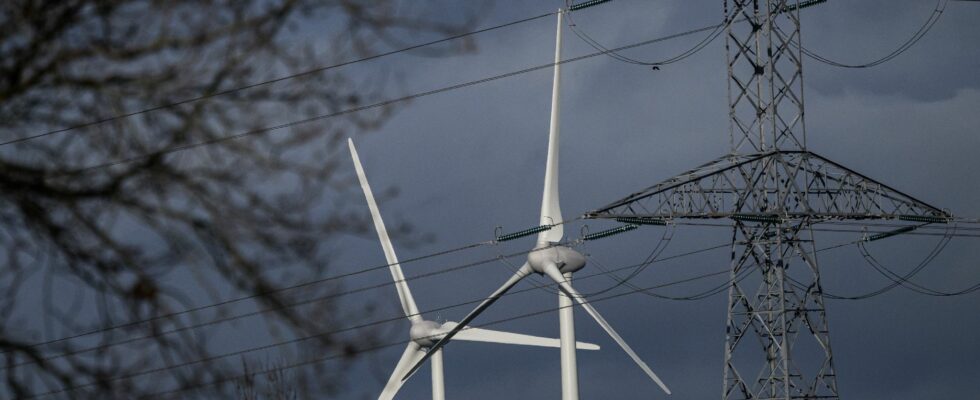He defines himself as an “anti-Jancovici”. Cédric Philibert, associate researcher at the French Institute for International Relations (Ifri), defends the place of renewable energies in our energy mix. His last book Wind turbines. Why so much hate? (Les petits Matins) sifts through the many accusations against wind energy. “No, the variability of wind turbines is not a real difficulty. Yes, it is possible to increase power on renewables without causing ecological disaster”, proclaims the expert. Interview.
The Express: André Bercoff, Stéphane Bern, Jean-Marc Jancovici… Your book singles out several personalities opposed to wind energy and denounces the massive use of fallacious arguments. Has the misinformation you describe become the main obstacle to the development of wind power in France?
Cedric Philibert: Without a doubt. Its impact is even considerable. We have to face a vast enterprise of disinformation on the part of a coalition of disparate interests – some economic, others purely political – of a formidable power and having colossal media outlets. The concern is that the opposition to wind turbines has gradually conquered significant sections of public opinion or at least succeeded in casting doubt on French support for renewable energies. Worse still, this opposition seems to have contaminated all the way to the top of the state. But we need wind power. In the scenario established by the RTE network operator with the most nuclear power, we would need 2.5 times more. This does not necessarily mean 2.5 times more masts compared to today because some models may be more powerful than others, however the effort remains substantial: we would probably need 20,000 wind turbines to be in phase with our goals. As a reminder, Germany already has 30,000.
Given the surface area available in France and the quality of our winds, we could reach that figure. But the question of rhythm is very important. I think we have to develop wind and solar power as if new nuclear reactors were never going to happen. Because the experience of the entire EPR generation shows us that when a date is given, delivery arrives in the best case after five years in China, and around ten years later in other countries. So, it is better to stick to this deadline. If the reactors are available earlier, we may or may not want to slow down the pace of deployment of wind turbines. I don’t have a problem with that.
A lot of false information circulates about the intermittency of wind turbines. How do you respond to those who tell us that this is an insoluble problem?
The misconception we often hear is that with a 25% load factor for wind turbines, we have to run on fossil fuels 75% of the time. To claim that is to deny reality: in France, we have a good mix of renewables in which solar and wind are very complementary. Our country can also count on hydraulics. In addition, other elements come into play: the demand for electricity varies, we can import electricity via the interconnections… We are also told that it is becoming difficult to meet the demand for electricity, and that this will be worse tomorrow due to the development of electric cars. It’s wrong. Electric cars are equipped with batteries that can be charged at off-peak times.
Certainly, we can perceive in certain anti-wind discourse a grain of truth. For example, if we are approaching the threshold of 100% renewable energy, we will indeed need back-up thermal power plants. However, these will only operate for a few tens or hundreds of hours per year. According to the study Energy Futures 2050 of RTE, they will produce only 2.5% of electricity consumption and even if they use gas, they will emit less CO2 emissions than our current system based on both nuclear and fossil fuels.
The disinformation, alas, does not stop there. It concerns both the use of rare metals – they are often used in offshore wind turbines for reasons of lightness and reliability – and the impact on biodiversity. In his book Wind turbines, the dark side of the ecological transition, Fabien Bouglé entitles one of his chapters: “Animals in great danger!” So far, concerning the major causes of bird mortality, NGOs have mentioned pesticides, hunting, windshields, building windows or wild cats, but certainly not wind turbines.
You also devote a chapter to photovoltaics. Does this domain also suffer from unwarranted attacks?
Yes. When I started the book, I didn’t expect this type of solution to be attacked so much. And yet. The left tells us, for example, that photovoltaic is good, but on the roofs, not in a field or on a forest exploitation. They probably didn’t look at the figures carefully, because to achieve all-renewable energy in 2050, we will need 200,000 to 250,000 hectares of photovoltaics, assuming that we install everything on the ground and nothing on the roofs. This represents a quarter of the area dedicated to biofuel, which is far from being gigantic.
Another interesting figure: according to my calculations, with 1 hectare of photovoltaics and electric vehicles, I do 100 times more kilometers than using first-generation biofuels and thermal cars. This means that biofuels are inefficient, expensive and work against biodiversity due to inputs and pesticides. Despite everything, photovoltaics continues to represent a great threat in the eyes of part of the political class. A spokesperson for La France insoumise recently wondered: “What are we going to eat when we have transformed half of our fields into a solar power plant”? No, it’s 250,000 hectares out of 28 million useful agricultural areas. It’s less than 1%. Such misunderstanding is absolutely tragic.
